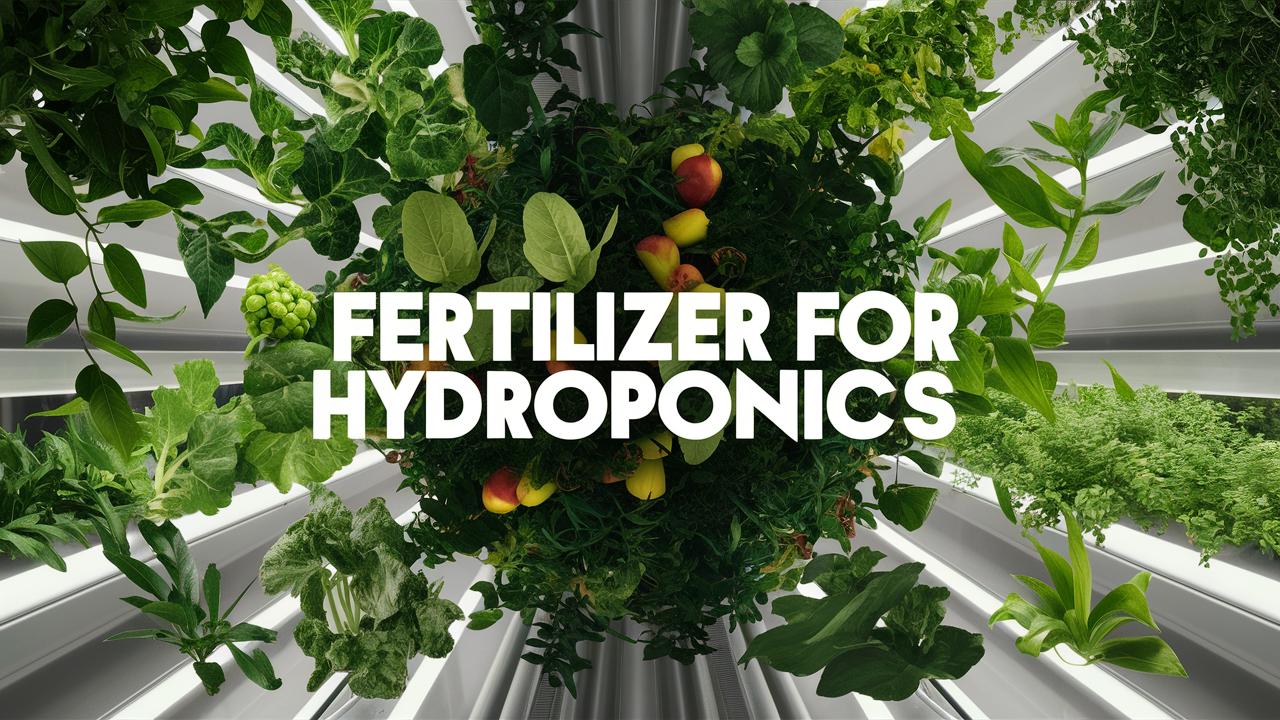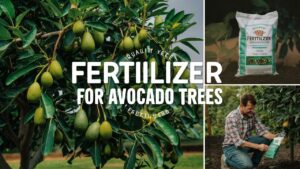In this guide, we will explore the intricacies of choosing the right fertilizer for your hydroponic system, guiding you through the essential considerations, types of nutrients, and tips for application.
Fertilizer For Hydroponics
| Image | Name | Rating | Shop |
|---|---|---|---|
 | Flora Series |  | |
 | MasterBlend |  | |
 | Grow-Big and Tiger-Bloom |  |
Flora Series
The General Hydroponics Flora Series is an effective 3-part nutrient system for hydroponic gardening. This comprehensive system includes three main components: FloraMicro, FloraBloom, and FloraGro.
This set covers all the essential nutrients your plants need at various growth stages, making it perfect for a well-rounded plant diet. The unique blend of macro and micronutrients ensures optimal growth, blooms, and yields. With this system, you can provide your plants with everything they require to reach their full potential in a hydroponic setting.
MasterBlend
If you’re looking for a reliable fertilizer for your hydroponic setup, we recommend checking out the 4-18-38 Complete Combo Kit Fertilizer Bulk. This product is designed to provide plants with everything they need for optimal growth.
This kit contains three separate components: MasterBlend 4-18-38, Calcium Nitrate 15.5-0-0, and Epsom Salt (Magnesium Sulfate). Used by professionals worldwide, it’s a trusted formula that ensures thorough plant uptake thanks to its 100% water solubility. The kit is also packed in the recommended 1/1/0.5 ratio based on the MasterBlend recipe, so you can be confident in getting the perfect combination of nutrients for your plants.
Grow-Big and Tiger-Bloom
The FoxFarm Fertilizer Soil Trio Liquid Nutrient bundle is a comprehensive system for hydroponic gardens. It includes three different formulas: Tiger Bloom, Grow Big, and Big Bloom, each serving a specific purpose in plant growth.
This trio of liquid nutrients works synergistically to support rapid vegetative development and promote abundant fruiting and flowering. For instance, Grow Big stimulates robust growing conditions while Tiger Bloom induces blooming with its balanced mix of nitrogen, phosphorus, and potassium. Meanwhile, Big Bloom serves as a general-purpose fertilizer for optimal plant health throughout its life cycle. If you’re looking to establish a solid foundation for your hydroponic setup or seeking an efficient way to supply a varied nutrient profile, this bundle seems like a sensible choice.
Easy Feed Plant Food
If you’re looking for a high-quality fertilizer specifically designed for hydroponics, consider the AeroGarden Liquid Nutrients. This product is ideal for indoor gardening with an AeroGarden growing system, providing consistent and fast growth for your plants.
The AeroGarden Liquid Nutrients features a pH buffering system that ensures your plants receive the nutrients they need to thrive. Its instant availability and ability to improve micronutrient release make it a standout option in plant fertilizers. Plus, this product is designed to work seamlessly with AeroGarden’s Easy Feed Plant Food Nutrient Dispensers, providing precise measurements for optimal results.
There is no information provided.
For hydroponic systems, General Hydroponics MaxiGro is a great choice. It’s formulated for use in hydroponics, so it should work well in your system.
We’ve chosen to recommend this fertilizer because of its lack of description – it suggests that the manufacturers are confident in its quality and effectiveness. This product comes from General Hydroponics, a well-respected name in the hydroponics industry. At 2.2 lbs, it’s a sizable container of nutrient-rich fertilizer for your plants.
How to Choose a Fertilizer for Hydroponics
Hydroponics is an innovative method of gardening that entirely omits soil, relying instead on nutrient-rich water solutions to nourish plants. This cutting-edge technique is rapidly gaining popularity among hobbyists and commercial growers alike, thanks to its efficiency and yield potential. As with any gardening method, selecting the right fertilizer is paramount to ensuring robust plant growth and maximizing harvest quality.
Understanding Hydroponic Systems
Before diving into fertilizer selection, it’s essential to comprehend the distinct nature of hydroponic systems. In hydroponics, plants grow directly in nutrient solutions, which are usually enriched with water-soluble fertilizers containing essential macro and micronutrients. Unlike traditional soil gardening, which relies on a vast ecosystem of microorganisms to break down nutrients, hydroponics demands a more hands-on approach to nutrient management since the growing medium—typically inert—is devoid of nutrients.
Types of Hydroponic Systems
Different hydroponic systems can influence how fertilizers are applied. From Nutrient Film Technique (NFT) to Deep Water Culture (DWC) and aeroponics, knowing the specific characteristics and requirements of your system will aid in your fertilizer choice.
For instance:
Nutrient Film Technique (NFT) continuously recirculates a thin layer of nutrient solution over the roots, necessitating precise nutrient concentrations.
Deep Water Culture (DWC) suspends plant roots in oxygenated nutrient solution, making it easier to control nutrient levels but also requiring frequent monitoring.
Aeroponics utilizes mist to deliver nutrients to the roots and may require specialized fertilizers that dissolve more readily than traditional granular forms.
Understanding how your chosen system operates will directly impact your fertilizer strategy.
The Importance of Nutrient Ratios
Choosing fertilizer for hydroponics is not merely about selecting a product off the shelf. It’s about understanding the plant’s nutrient requirements and how they translate into fertilizer ratios. The three major macronutrients—Nitrogen (N), Phosphorus (P), and Potassium (K)—are represented in formulations as N-P-K ratios. This ratio is critical in determining what fertilizer to use, as different plants go through various growth stages that require distinct nutrient compositions.
Macronutrients in Detail
Nitrogen (N): Vital for leafy growth and is crucial in the vegetative stages for plants. If you’re growing leafy greens, a nitrogen-rich fertilizer will promote lush foliage.
Phosphorus (P): Essential for root development and flower and fruit production. During the flowering stage of plants like tomatoes and cucumbers, a phosphorus-heavy fertilizer may be beneficial.
Potassium (K): Plays a critical role in water regulation and aids in overall plant health. It is particularly important in the later stages of growth to enhance fruit quality and yield.
Identifying Micronutrients
In addition to N-P-K, micronutrients are equally necessary for plant health but are needed in smaller quantities. These include:
Iron (Fe)
Manganese (Mn)
Zinc (Zn)
Copper (Cu)
Boron (B)
Having a balanced micronutrient profile is crucial, especially in hydroponics, since plants can show signs of deficiency much quicker compared to soil-based growing.
Types of Hydroponic Nutrients
Nutrients for hydroponics are available in different formulations: liquid, powder, and granular. The choice here will influence how you mix and apply them.
Liquid Nutrients
Liquid fertilizers are popular in hydroponics because they are readily soluble, making nutrient application straightforward. They can provide immediate nutrient availability to plants, ensuring swift uptake.
Examples:
Hydroponic nutrient concentrates designed specifically for hydroponics.
Pre-mixed solutions available in horticultural supply stores.
Powder Nutrients
These often require mixing with water, and careful measurement is critical to avoid overdosing. They are also highly concentrated and come in various formulations tailored to plant growth stages.
Granular Nutrients
While less common in hydroponic systems, some growers opt for slow-release granular fertilizers. These can provide a longer-term solution but may be less effective in recirculating systems.
Comprehensive Nutrient Chemistry
Chemistry plays a pivotal role in hydroponic fertilizer selection. Some fertilizers are formulated as complete nutrient solutions, whereas others may need supplemental nutrients added to meet the specific needs of the plants. Understanding nutrient chemistry allows growers to create a balanced mix that suits their plants’ growth stage.
pH Considerations
The pH level of your nutrient solution is crucial in hydroponics. Most nutrients are available to plants at a pH range between 5.5 and 6.5. Regularly testing and adjusting pH will ensure that plants can absorb the nutrients effectively. There are specific fertilizers engineered to work at optimal pH levels.
Analyzing Water Quality
The source and quality of your water can significantly impact nutrient availability and overall plant health. Different water types—tap water, distilled water, or rainwater—can carry varying mineral loads, influencing the nutrients needed.
Water Hardness
Hard water is rich in minerals, which can interfere with nutrient absorption. If your water source is hard, you might find that certain nutrients become locked out. On the other hand, distilled water has no minerals, requiring careful formulation to ensure that plants receive necessary elements.
Customizing Nutrient Solutions
While store-bought nutrients can work wonders, some seasoned hydroponic gardeners choose to mix their own nutrient solutions. This allows for customization based on plant types, growth stages, and water quality.
Base Nutrients
In a customized hydroponic nutrient regimen, a base nutrient provides the essential macronutrients and micronutrients. Bulk options can often offer a price advantage and a chance for micro-adjustments tailored to specific plants.
Supplements and Boosters
Adding specific supplements during growth phases can enhance growth and yield. Plant-specific supplements like bloom boosters or root enhancers can be integrated seamlessly into your nutrient management strategy.
Fertilizer Application Techniques
Proper application is just as critical as the fertilizer type. The method can vary based on your hydroponic system and plant needs.
Nutrient Mixing
Consult product labels for recommended mixing ratios, but always start with a lower concentration and adjust based on observed plant health. Keep detailed records of your mixes and adjustments to find what works best for your specific setup.
Feeding Routines
Some hydroponic systems require constant nutrient delivery, while others allow for scheduled feeding. Adjust your feeding routine based on plant growth stages; for instance, during early vegetative growth, plants may require more nitrogen, while transitioning to a blooming or flowering stage would necessitate phosphorus and potassium prioritization.
Troubleshooting Nutrient Issues
As a hydroponic grower, you’ll encounter various challenges, including nutrient deficiencies or toxicities. Recognizing the symptoms early can prevent more significant issues down the line.
Deficiency Signs
Nitrogen Deficiency: Yellowing leaves, particularly older leaves; slow growth.
Phosphorus Deficiency: Dark green or purplish discoloration of leaves.
Potassium Deficiency: Brown edges on leaves, curling, and poor fruit quality.
Toxicity Signs
Too much of a nutrient can also be problematic, leading to burnt leaf edges or slow growth. Regular monitoring and adjustments are essential to maintain the right balance.
The Role of Biological Additives
Though hydroponics has mainly focused on mineral nutrient solutions, an increasing interest in biological additives such as beneficial microbes is emerging. Biostimulants, mycorrhizal fungi, and seaweed extracts can enhance nutrient uptake, stimulate growth, and increase plant resilience.
Enhancing Soil Health
While traditional hydroponics doesn’t use soil, incorporating organic-based fertilizers or additives can bring balance to nutrient delivery. However, go easy as this may lead to algae issues in water-based systems.
Considering Organic vs. Synthetic
In the debate over organic versus synthetic fertilizers, each has its pros and cons. Organic fertilizers may contribute to a more balanced ecosystem and healthier plants, but they can also vary significantly in nutrient availability. On the other hand, synthetics provide predictability and controlled nutrient release but can lead to salt buildup if not managed correctly.
Where You Stand
Deciding between organic and synthetic often comes down to personal preference, desired outcomes, and the specific plants you’re growing. Consider trialing both methods to see which yields superior results in your system.
Conclusion
Choosing the right fertilizer for hydroponics is not a one-size-fits-all endeavor. It requires a good understanding of your plants’ needs, the specific hydroponic system used, and how nutrients interact with water quality.







